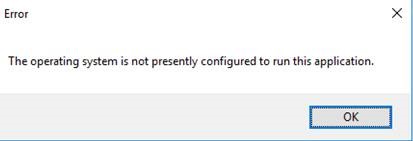The Consul Hashicorp DNS service is a frequently used and modern service. Enclosed you will find a Powershell Script to install the Consul-Client as a Windows-Service. The script also allows you to run a version update.
When using the script you have to adjust the variables in line 1-13. For the update only the version number has to be adjusted, which is based on https://releases.hashicorp.com/consul/.
The script creates and updates the following config Files:
\config\consul.hcl
\config\node_exporter.json
If you don’t need this, you can comment it out of the script yourself.
#Install/Update Consul Service
#21.09.2020 by J.Kühnis
#Consul Version based on https://releases.hashicorp.com/consul
$CONSUL_VERSION = '1.7.5'
$CONSUL_URL = 'https://releases.hashicorp.com/consul'
$CONSUL_DIR = "$env:SystemDrive\Consul"
$consulfqdn = "fqdn.consul.server.company.example"
$domainfqdn = "fqdn.server.company.example"
# Load DatacenterLoc from Webrequest
[Net.ServicePointManager]::SecurityProtocol = [Net.SecurityProtocolType]::Tls12
$DatacenterLoc = (Invoke-WebRequest "http://fqdn.consul.server.company.example:8500/v1/kv/config/datacenter?raw=true" -UseBasicParsing).Content
#Windows Service params
$params = @{
Name = "Consul"
BinaryPathName = "$CONSUL_DIR\Consul.exe agent -config-dir=$CONSUL_DIR\config -data-dir=$CONSUL_DIR\data"
DisplayName = "Consul"
StartupType = "Automatic"
Description = "Consul Hashicorp DNS Service."
}
#stop consul service, if exists
IF(get-service -Name $params.Name -ErrorAction SilentlyContinue){
Stop-Service -Name $params.Name -Force
do {
Start-sleep 1
}
until((Get-Service -Name $params.name).status -eq 'Stopped')
start-sleep 1
}
#Create Consul Folder
IF(!(Test-Path $CONSUL_DIR)){
New-Item -ItemType Directory $CONSUL_DIR
}
Set-Location "$CONSUL_DIR"
#Create Subdir
$arraySubDir = @(
"data"
"certs"
"config")
$arraySubDir | %{
IF(!(Test-Path "$CONSUL_DIR\$_")){
New-Item -ItemType Directory "$CONSUL_DIR\$_"
}
}
<# Set Download Proxy, if needed
$WebClient = New-Object System.Net.WebClient
$WebProxy = New-Object System.Net.WebProxy("http://your.proxy.url",$false)
$WebProxy.Credentials = $Credentials
$WebClient.Proxy = $WebProxy
#>
#down
$WebClient.DownloadFile("${CONSUL_URL}/${CONSUL_VERSION}/consul_${CONSUL_VERSION}_windows_amd64.zip","$CONSUL_DIR\consul_${CONSUL_VERSION}_windows_amd64.zip")
$WebClient.DownloadFile( "${CONSUL_URL}/${CONSUL_VERSION}/consul_${CONSUL_VERSION}_SHA256SUMS","$CONSUL_DIR\consul_${CONSUL_VERSION}_SHA256SUMS")
$WebClient.DownloadFile( "${CONSUL_URL}/${CONSUL_VERSION}/consul_${CONSUL_VERSION}_SHA256SUMS.sig","$CONSUL_DIR\consul_${CONSUL_VERSION}_SHA256SUMS.sig")
get-content "${CONSUL_DIR}/*SHA256SUMS"| select-string (get-filehash -algorithm SHA256 "${CONSUL_DIR}/consul_${CONSUL_VERSION}_windows_amd64.zip").hash.toLower()
#Unzip Download
Expand-Archive "${CONSUL_DIR}/consul_${CONSUL_VERSION}_windows_amd64.zip" "$CONSUL_DIR" -Force
#Add env var
$env:path += ";${CONSUL_DIR}"
[Environment]::SetEnvironmentVariable("Path", [Environment]::GetEnvironmentVariable("Path", "Machine") + ";${CONSUL_DIR}", "Machine")
#Create/Update ConfigFiles
### Create HCL Config File; consul.hcl ###
$hcl_config = "${CONSUL_DIR}\config\consul.hcl"
IF(Test-Path $hcl_config){
Remove-Item $hcl_config -Force
}
New-Item $hcl_config
$hcl_filecontent = @(
'datacenter = ' + '"' + $DatacenterLoc + '"'
'retry_join = ["' + $consulfqdn + '"]'
'domain = "' + $domainfqdn + '"'
'acl = {enabled = true, default_policy = "deny", enable_token_persistence = true }'
)
Add-Content -Path $hcl_config $hcl_filecontent
### Create node_exporter.json config file ###
$json_config = "${CONSUL_DIR}\config\node_exporter.json"
IF(Test-Path $json_config){
Remove-Item $json_config -Force
}
New-Item $json_config
$body = [pscustomobject]@{
services= @([ordered]@{
name = "node-exporter"
tags = @("monitor")
port = 9100
})
}
Set-Content $json_config ($body | ConvertTo-Json -Depth 3)
#register Consul as a WindowsService
IF(!(get-service -Name $params.Name -ErrorAction SilentlyContinue)){
New-Service @params
}
Start-Service -Name $params.Name


